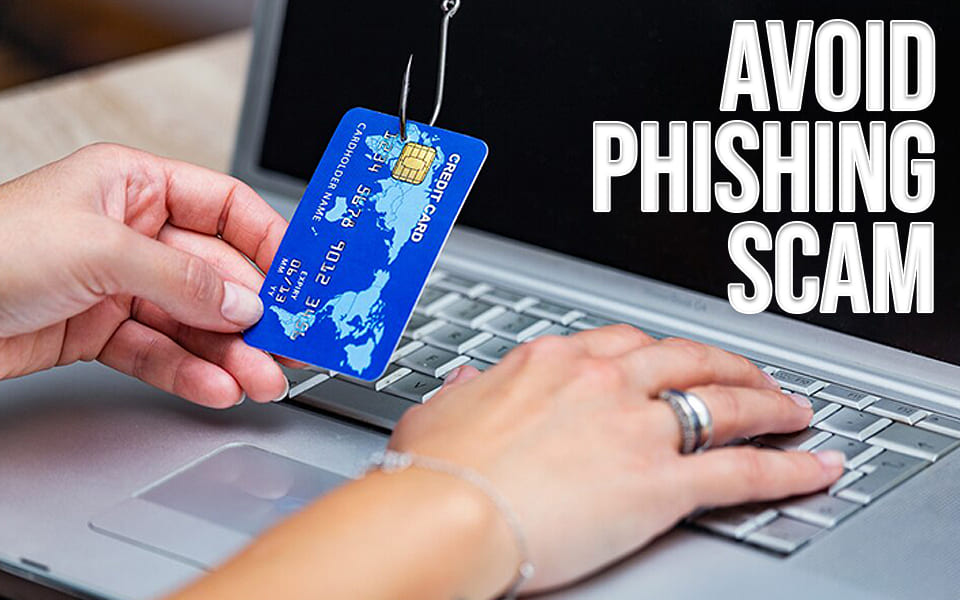How To Recognize And Avoid Phishing Scam?

What Is Phishing?
Phishing is a social engineering method used to get private user data, including credit card numbers and login passwords. When an attacker assumes the identity of a reliable entity, the victim is duped into opening an email, instant message, or text message. The receiver is then duped into clicking on a malicious link, which can result in the installation of malware, the freezing of the machine as part of a ransomware assault, or the disclosure of private data.
A cyber attack can have disastrous consequences. People are affected by illicit purchases, loss of cash, or identity theft. Furthermore, phishing is frequently employed as part of a bigger attack, such as an advanced persistent threat (APT) event, to build a foothold in business or governmental networks. Employees are compromised in this scenario to circumvent security perimeters, propagate malware within a closed environment, or get privileged access to guarded data.
An organization that is the victim of such an assault often suffers serious financial losses, including a loss of market share, reputation, and customer confidence.
Depending on the scale, a phishing attempt might turn into a security disaster a company would struggle to recover.
Types of Phishing Scams
Scammers use the same tactics consistently to deceive people into clicking risky links or giving out personal information. They have a variety of techniques in their sleeves. Each phishing campaign may appear to be different on the surface, with the pretext relating to one organization or another and the attackers discovering new ways to circumvent security filters, but their phishing strategies seldom alter.
Unfortunately, these minor modifications are frequently enough to take us off guard. Each new effort appears authentic enough to fool tired or irresponsible staff, thanks to time-tested methodologies or skillfully organized social engineering approaches.
Email Phishing: The most popular sort of phishing is email phishing, which has been around since the 1990s. These emails are sent by hackers to any email address they can access. The email normally warns you that your account has been compromised and that you must reply quickly by clicking on the supplied link. These attacks are generally obvious because the wording in the email frequently contains spelling and/or grammatical problems.
Some emails make it difficult to recognize phishing attempts, particularly when the wording and grammar are skillfully prepared. Examining the email source and the website to which you are directed for suspicious wording might provide indicators as to whether the source is real.
Whaling:Whaling attacks are directed at senior management and other positions of authority. Whale attacks have the same goal as other types of phishing efforts, but the method is sometimes fairly subtle. Senior employees usually have a plethora of public knowledge that attackers might use to build highly powerful attacks.
Typically, these attacks do not make use of strategies like malicious URLs and false links. Instead, they use highly personalized messaging based on information acquired from the victim’s research. Whaling attackers, for example, typically use phony tax returns to get sensitive information about the victim, which they then use to plan their attack.
Smishing and Vishing: This is a phone-based phishing attack rather than textual communication. Smishing is the fraudulent transmission of SMS messages, whereas vishing is the fraudulent transmission of phone calls.
In a popular voice-phishing scam, an attacker appears as a fraud investigator for a credit card company or bank, informing victims that their account has been hijacked. Criminals then ask for the victim’s credit card details, allegedly to verify their identity or move funds to a safe account (which is the attacker’s).
Vishing schemes may also use automated phone calls posing as from a trustworthy source and instructing the victim to input personal information onto their phone keypad.
Angler Phishing: These attacks make use of phony social media identities linked to well-known organizations. The attacker pretends to be a respected business and uses the same profile photo as the legitimate corporate account.
Attackers take advantage of consumers’ tendency to express complaints and seek assistance from businesses via social media platforms. The buyer contacts the attacker’s fraudulent social account rather than the actual brand.
When attackers get such a request, they may require personal information from the customer to properly identify the problem and respond. In other cases, the attacker sends a link to a fake customer service page, which redirects to a malicious website.
Recognize Phishing Attempts
Understanding how to recognize phishing emails is one of the greatest strategies to prevent phishing. There are telltale signs of phishing, although each email may appear somewhat different.
Common warning signs of phishing:
- Unfamiliar greeting or tone
- Unsolicited messages
- Grammar and spelling errors
- Sense of urgency
- Suspicious links or attachments
- Requests for personal information
- Inconsistencies in email addresses, links, etc.
- Unusual requests
- Alerts that you’ve won something
If the questioned email fits any of these criteria, it may be a phishing scam.
Preventing Phishing Attacks
- Never reply to a scam email: If you have any doubts about a message in your inbox, it’s better not to respond. By answering, you inform the fraudster that you are dealing with an active email account. This may encourage them to try to defraud you again in the future.
- Report suspicious messages: If you see a questionable communication in your inbox, report it as soon as possible. If the phishing email was sent to your work email, notify your company’s IT staff as well. This can help them stay on top of any phishing risks and keep their inbox and the inboxes of their coworkers safe. Whether at work or not, it’s always a good idea to report a possible phishing scam to your email provider. Depending on the supplier, this procedure may change.
- Do not provide personal information: When using email, avoid transmitting any critical information. This can help prevent your personal information from falling into the wrong hands and being used fraudulently. It’s also worth noting that a respectable financial organization would never request your personal information by email. If they are, it is most likely a phishing effort.
- Make use of strong passwords: A password is frequently the last line of protection between your personal information and an inquisitive cybercriminal, whether it’s to unlock your device or log in to an online account. You must use strong passwords to keep things as secure as possible. That way, if you are unintentionally the victim of a phishing attempt, you will know that your accounts are protected by strong passwords to keep hackers out of your personal information.
- Never click on untrustworthy websites or attachments: Avoiding suspicious links and files is a personal cybersecurity recommended practice, no matter where you are on the internet. In the case of phishing, an unknown link might include malware, putting you and your device in danger. As a result, never click on a link or attachment that you are doubtful about.
- Make use of two-factor authentication: Another option to safeguard your accounts against phishing attempts is to set up two-factor authentication (2FA), which adds an extra layer of security to your online accounts. Instead of only a password, 2FA will ask you to enter a second form of verification, such as a unique code or security question.
Conclusion
In the ever-changing world of cyber threats, maintaining good cybersecurity necessitates being able to recognize phishing attempts and putting effective techniques for preventing phishing attacks into practice. Because they can result in monetary loss, identity theft, and data breaches, phishing attempts continue to be a problem for both people and organizations. In the contemporary digital environment, knowing how to identify phishing attempts is crucial.
Increased phishing awareness is essential for spotting these sneaky techniques since knowing the ins and outs of email phishing, whaling, smishing, vishing, angler phishing, and other sneaky tactics may encourage consumers to stay vigilant. When preventing phishing attacks, it is advised to exercise care by never responding to ominous emails, reporting any suspected phishing attempt right away, and avoiding exchanging personal information over the internet.
Building a solid defense against phishing involves using strong passwords, avoiding clicking on dubious links and files, and using two-factor authentication. As technology develops, creating a culture of phishing awareness is essential for enabling people and organizations to safely and confidently traverse the digital world.
FAQ
What should I do if I get an untrustworthy email?
Avoid opening any links or downloading any attachments. Inform your email provider or IT department about the questionable email. Delete the email and, if required, scan your device with an antivirus program.
Can phishing schemes infect computers with malware?
Yes, many phishing schemes are meant to spread malware. Clicking on dangerous links or downloading infected files might result in malware infestations that jeopardize the security of your device.
“Fortify your digital defenses against phishing scams. Take action now with scam reviewers to safeguard your personal and financial information.”


 4.2/5.0
4.2/5.0
 2.1/5.0
2.1/5.0 3.7/5.0
3.7/5.0